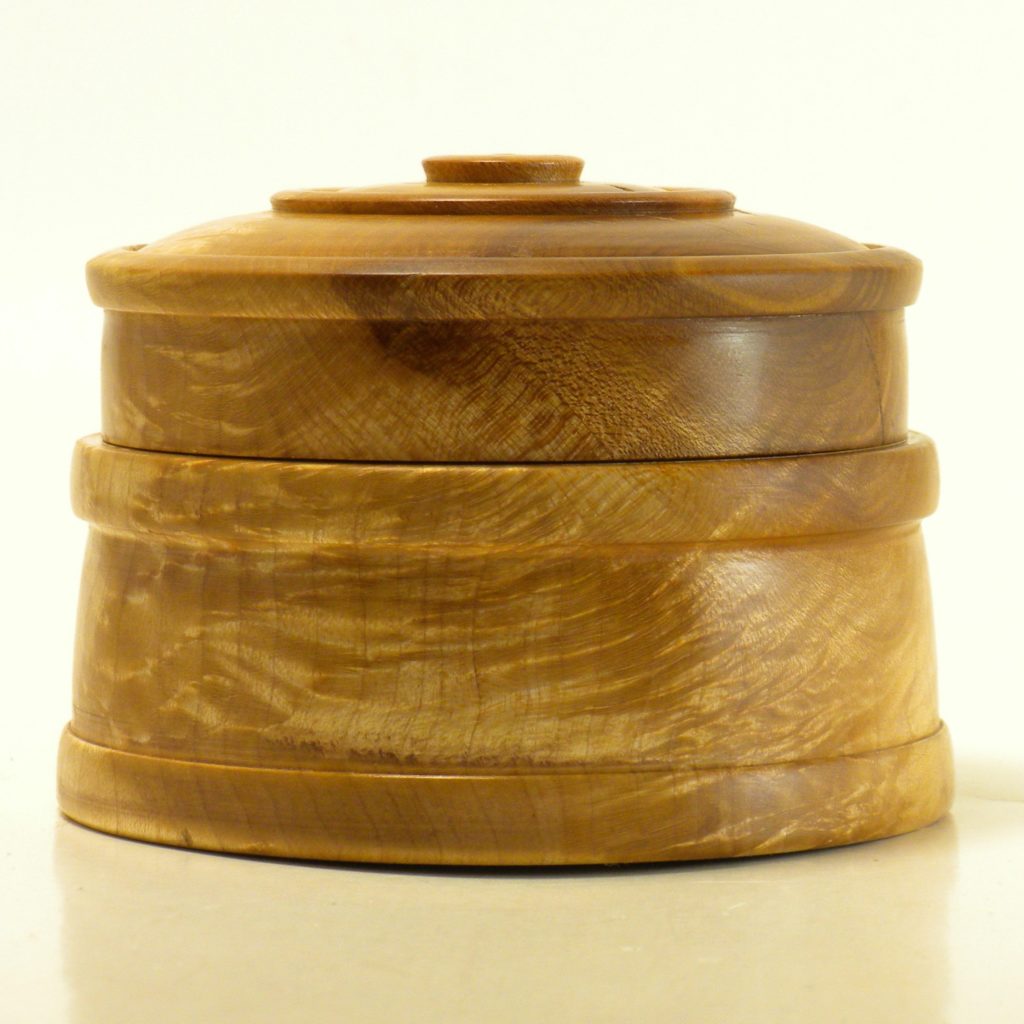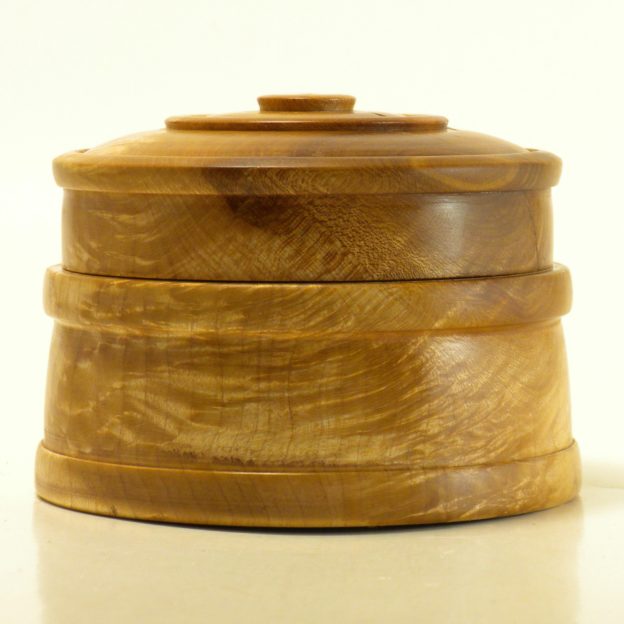Keeping Your Turned Woodwork Looking Great.

If you have a hand turned bowl, or lidded box that has lost its sparkle, and it is starting to look dull, no worries, read on.
The care for these items is easy, and I think enjoyable. Oil is rubbed into the wood with a soft cloth. Hand turned woodwork loves to be handled and oiled, and that is all that is needed for the most part. Pieces that are used and handled everyday will likely not need to be oiled. Items that sit on a display shelf, or bowls that are washed with water will need to be oiled from time to time to keep them looking wonderful. You must be careful not to use an oil that will turn rancid however. Do not use just any oil that you happen to have about in your kitchen. Cooking oils generally will turn rancid in time they may feel sticky and give the wood an off-color, and a bad, stale smell.
Both mineral oil and walnut oil are fine to use. They will soak into the wood and restore a nice vibrant look to it. You can bring back the look of smaller pieces with a little Vaseline, which is basically mineral oil rubbed in with a rag. Just a little bit. Paste wax made for furniture works well for pieces that are not to be used for food or drink. The wax will last longer than oil, but there is a solvent in the paste wax that makes it unsuitable for salad bowls and such.
Nearly all the pieces I turn are from local trees, not commercial lumber. And nearly all the pieces I turn are finished on the lathe with nothing more than friction and bees wax. A good piece of wood will polish nicely and look great finished this way. The benefit of this finish is that the wood looks beautiful and natural. There is not a perceptible coating sitting on top of the wood. You really can see and touch the wood. But this type of finish needs a little (very little) upkeep. It is not as durable as a hard surface finish like lacquer or varnish.
Finishing wood with bee's wax is a very simple solution that has been done for thousands of years. Done on the lathe, the work is spun fast, friction melts the wax and it soaks into the wood. Then the wood is buffed with a soft cloth. This brings the wood to a gorgeous luster, creating a nice shine that starts from inside the wood.
What happens is that when we look at the wood, light is actually coming out from beneath the surface of the wood. We see rich deep color, we can see into the wood.
The word for it is chatoyance.
The term is used in gemology and woodworking to describe same phenomenon. This is why so much care is given by a good craftsman to polish and finish the wood. We call it "making the grain pop." But don't take my word for it, read more here.
When wood is made very smooth, and then oil, wax or other clear surface finishes are applied, the light that strikes the wood will penetrate the wood and be bounced back out more or less unchanged. If the wood is scratchy in texture and dry the light is scattered all over and the color and grain of the wood is obscured and the wood will look dull and dry.
A wood salad bowl can be rinsed under water to wash it, but it must never be put in a dish washer or soaked for any length of time as this will damage the wood.

